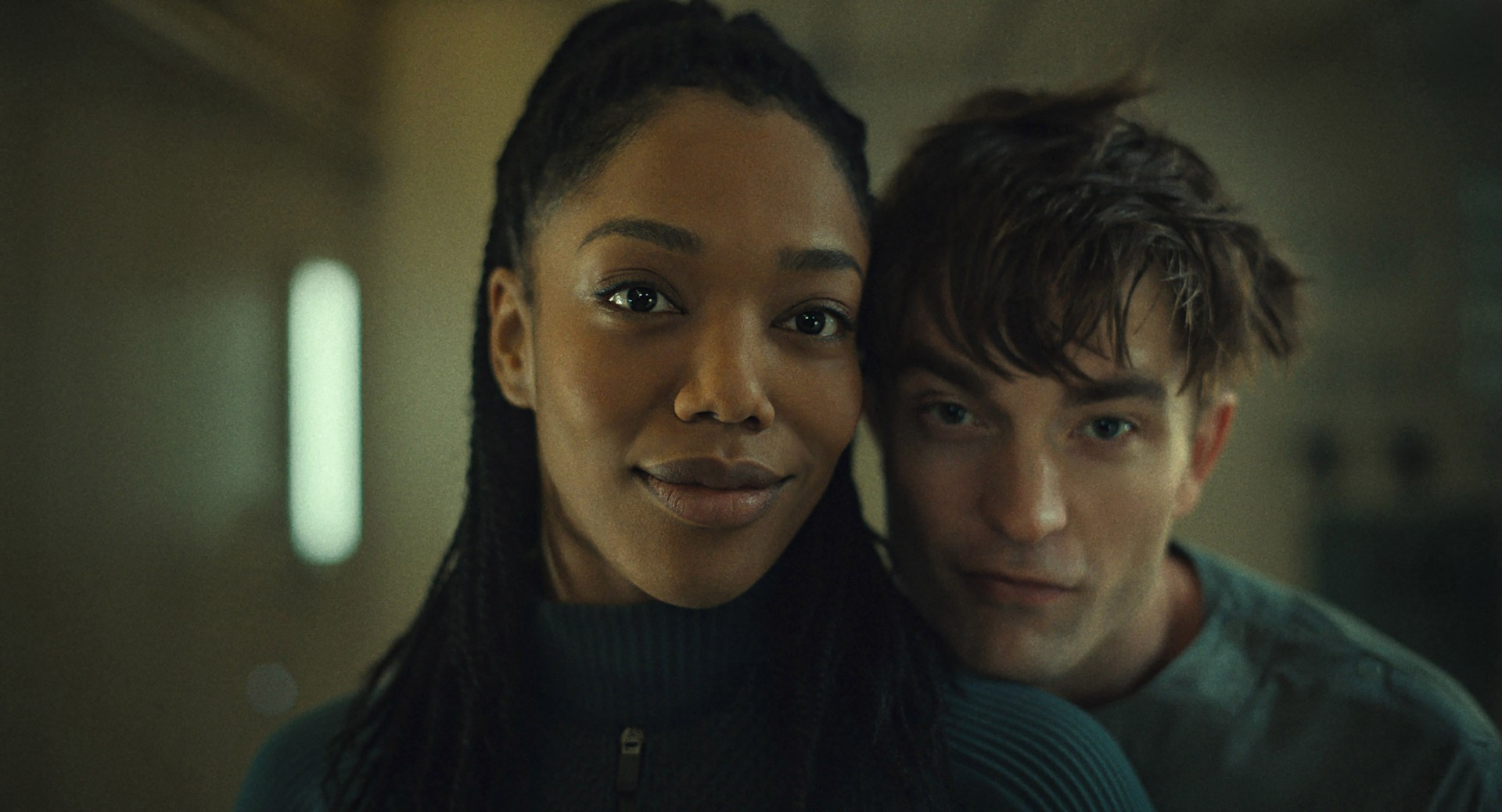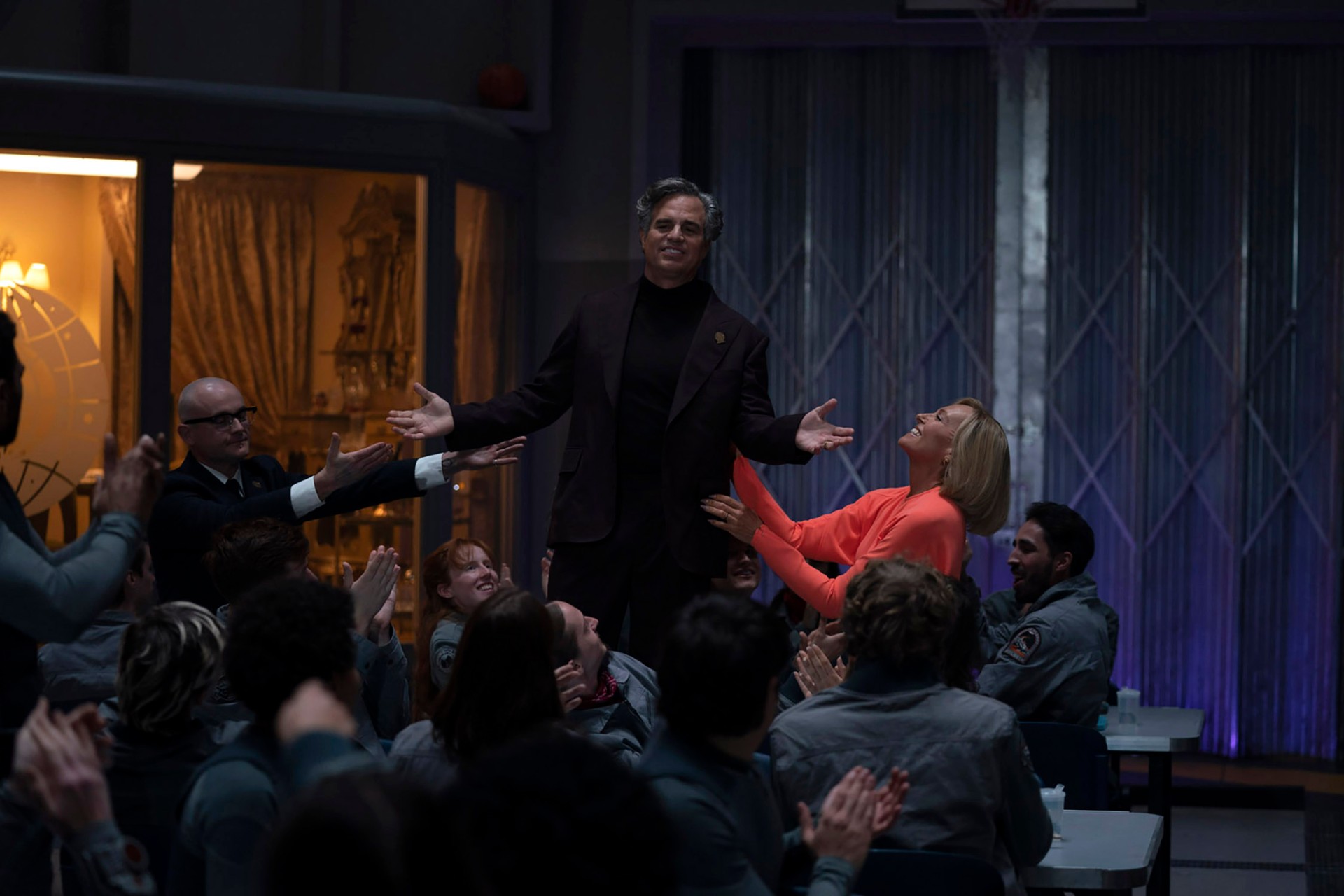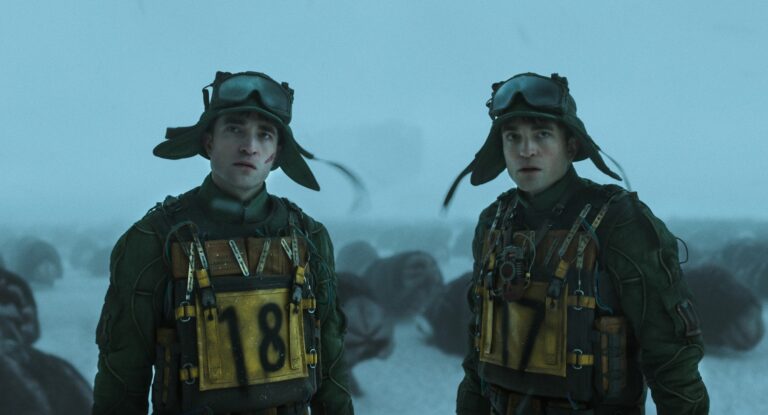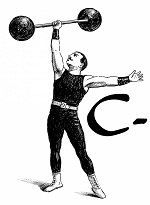Factory farming and animal rights in “Okja”; the struggles between social classes in “Snowpiercer”; economic disparity in “Parasite.” But “Mickey 17” is his most blunt picture regarding the politics of it all. There are segments in the film that work based on this “bluntness.” Overall, it comes off as rather grating commentary rather than sharp or playful, unlike what we have seen before from the Korean filmmaker. It is a tale of two halves; one entices while the other disrupts.
The Heart of ‘Mickey 17’ Lies in Naomi Ackie’s Nasha
“Mickey 17” follows the titular character, Mickey (Robert Pattinson), a man who decides to head to space to enlist as a disposable because he has no other choice. Each time Mickey dies, a new body is regenerated from leftover foods and bones, and most of his memories are intact. After a bad loan deal with his friend Timo (Steven Yeun), who convinced him to open a macaron business, Mickey ran away to where people least expected–hiding from the mercenaries he owed money. His job is sacrificing himself “for the greater good,” rather than letting other people die. Mickey is repeatedly killed and regenerated for dangerous missions, his memories intact each time, serving his boss, Kenneth Marshall (Mark Ruffalo), in his quest to exploit Mickey’s disposable nature.
For Marshall, death is nothing. Mickey suffers, but he does not face that existential dread of not being alive and alert anymore because of his constant replications. But he does get lonely, as nobody understands his situation, other than his partner, Nasha (Naomi Ackie), who loves and cherishes him unlike anyone else has done in his life. She’s one of the reasons this life in space and constant death is worth it. In the first half of “Mickey 17,” Bong Joon Ho tells the story of a man searching for meaning in life. After many years of trying to achieve something, Mickey finds himself in a situation where he is devalued even more. Bong adds many scenes where Mickey is punished and punished again.

Between those scenes, a light emerges, and a sense of tenderness arises amidst the tragic happenings from the titular character’s dynamics with Nasha and Kai (Anamaria Vartolomei). There is a beautiful, romantic scene where Nasha sees a tortured Mickey in a glass cell while he’s tested for vaccine trials. She can’t stand seeing him suffer alone. So, Nasha puts herself inside the cell and nurtures him while he’s enduring such things–caressing this poor soul. Such a scene encapsulates the first half of “Mickey 17,” exploring our search for meaning, love, and purpose amidst the rumblings of today’s cataclysms. In every scene where Ackie and Pattinson are together, you feel their respective characters’ devotion. They find meaning (and the actors find the crux of their characters) with each other.
The Second Half of ‘Mickey 17’ Becomes an Endurance Test
A tangibility to their love renders grounded facets, even amidst the fantasy world setting. It is this chemistry that carries the film to its latter treacherous paths, albeit slightly. Nasha is the symbol of humanity and compassion for Mickey. She’s the love of his life, a person who highlights his importance and sees the value in him. He may be deemed replaceable by the entire space colony. But since Nasha’s heart is so big and her spirit is so bright, Mickey’s soul shines. When you think “Mickey 17” is finding its footing, Bong Joon Ho embalms the movie with highly unsubtle political commentary, digging at today’s corrupt, evil, racist world leaders. Kenneth Marshall leads his imperial space commando to the unknown. He makes his followers wear red caps in hand, as he makes Trump-like diction and expressions.
With Marshall in sight, Mickey deals with a dilemma that might kill him, this time for good. After the 17th version of him was assumed dead, a new one was printed. And then duplicates were born. Two Mickeys exist at once, which is highly illegal. This second half of the film utilizes the zaniness and absurdity of the duplicate and reincarnation concept to fuel the scenarios where Bong critiques the government of today and the rampant leaders working to annihilate it. Robert Pattinson opts for a Chaplin-inspired performance, where he focuses on expressions and mannerisms to create slapstick set pieces. Meanwhile, Mark Ruffalo and Toni Collette’s performances as the imperious Marshall and his first lady, Ylfa, fail to land. Both actors lean too heavily into exaggerated caricatures. Ruffalo’s mawkish impressions and Collette’s overdone accent work detract from the film’s weighty themes.
The exaggeration in their performances becomes insufferable. Their portrayals veer into sketch-comedy territory. It detracts the movie from the presented themes, especially the ones planted in the first half. This is a satirical portrait, hence the ridiculousness and heightened tone. However, it is an endurance test. The audience fights the urge to disconnect entirely from the picture because of blatant commentary. “Mickey 17” is a bold move by Bong Joon Ho to make a high-budget studio picture that comments on these topics, especially today of all times, with the regulations the American government is placing on production companies. I appreciate that he decided to go with this project as his follow-up to “Parasite.”

Perfect Timing, Albeit with the Wrong Tone and Approach
The timing is more than perfect. With everything that has happened (and is still currently happening), this was the best time to release a picture that talks, without sugarcoating things, about the impending disaster if we let things escalate. A recent example is Radu Jude’s “Kontinental ‘25,” which premiered at the Berlin International Film Festival last month. However, the way Bong introduces the political commentary in “Mickey 17” comes with such a weak force from the start that it leaves the viewer more than frustrated with the presentation. We crave more nuance in a cinematic landscape that is inclining more to caricatured critiques and satirical commentary.
Films like “The Substance” and “Triangle of Sadness” are examples of heightened or satirical portraits of cultural observations. The former discusses beauty standards and aging, while the latter breaks down the class structure and power dynamics. The two films repeat their message constantly through the sledgehammer process. However, the difference between them and “Mickey 17” is that the directors, in this case, Coralie Fargeat and Ruben Östlund, build something substantial outside of the satire they are hammering. Bong initially does such with Nasha and Mickey’s relationship. Yet, he dismisses it entirely before anything of weight occurs.



